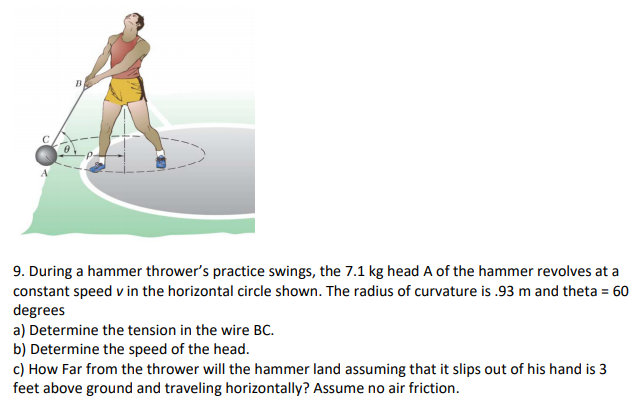During a hammer thrower's practice swings, the 7.1 kg head A of the hammer revolves at a constant speed v in the horizontal circle shown. The radius of curvature is .93 m and theta = 60 degrees a) Determine the tension in the wire BC. b) Determine the speed of the head. c) How Far from the thrower will the hammer land assuming that it slips out of his hand is 3 feet above ground and traveling horizontally? Assume no air friction.
